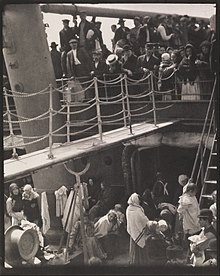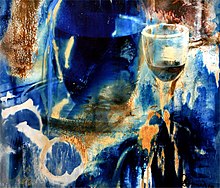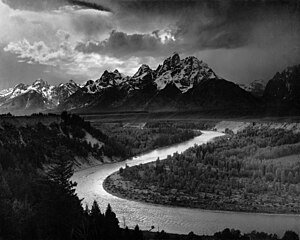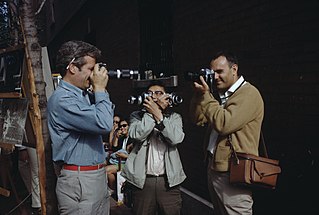
Photography is the art, application, and practice of creating images by recording light, either electronically by means of an image sensor, or chemically by means of a light-sensitive material such as photographic film. It is employed in many fields of science, manufacturing, and business, as well as its more direct uses for art, film and video production, recreational purposes, hobby, and mass communication.

A photographer is a person who uses photography makes photographs.

Pictorialism is an international style and aesthetic movement that dominated photography during the later 19th and early 20th centuries. There is no standard definition of the term, but in general it refers to a style in which the photographer has somehow manipulated what would otherwise be a straightforward photograph as a means of creating an image rather than simply recording it. Typically, a pictorial photograph appears to lack a sharp focus, is printed in one or more colors other than black-and-white and may have visible brush strokes or other manipulation of the surface. For the pictorialist, a photograph, like a painting, drawing or engraving, was a way of projecting an emotional intent into the viewer's realm of imagination.

Photojournalism is journalism that uses images to tell a news story. It usually only refers to still images, but can also refer to video used in broadcast journalism. Photojournalism is distinguished from other close branches of photography by having a rigid ethical framework which demands an honest and impartial approach that tells a story in strictly journalistic terms. Photojournalists contribute to the news media, and help communities connect with one other. They must be well-informed and knowledgeable, and are able to deliver news in a creative manner that is both informative and entertaining.

Alfred Stieglitz was an American photographer and modern art promoter who was instrumental over his 50-year career in making photography an accepted art form. In addition to his photography, Stieglitz was known for the New York art galleries that he ran in the early part of the 20th century, where he introduced many avant-garde European artists to the U.S. He was married to painter Georgia O'Keeffe.
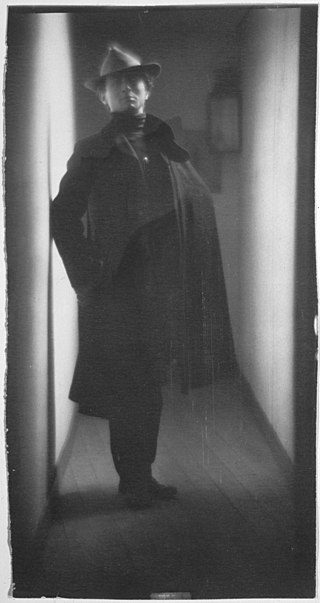
Edward Jean Steichen was a Luxembourgish American photographer, painter, and curator, renowned as one of the most prolific and influential figures in the history of photography.
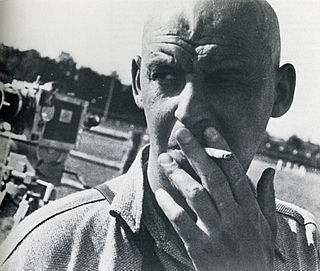
Aleksander Mikhailovich Rodchenko was a Russian and Soviet artist, sculptor, photographer, and graphic designer. He was one of the founders of constructivism and Russian design; he was married to the artist Varvara Stepanova.
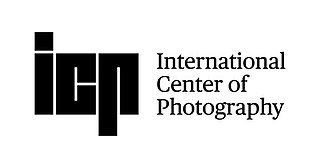
The International Center of Photography (ICP), at 79 Essex Street on the Lower East Side of Manhattan, New York City, consists of a museum for photography and visual culture and a school offering an array of educational courses and programming. ICP's photographic collection, reading room, and archives are at Mana Contemporary in Jersey City, New Jersey. The organization was founded by Cornell Capa in 1974.

Fashion photography is a genre of photography that portrays clothing and other fashion items. This sometimes includes haute couture garments. It typically consists of a fashion photographer taking pictures of a dressed model in a photographic studio or an outside setting. It originated from the clothing and fashion industries, and while some fashion photography has been elevated as art, it is still primarily used commercially for clothing, perfumes and beauty products.
The term vernacular photography is used in several related senses. Each is in one way or another meant to contrast with received notions of fine-art photography. Vernacular photography is also distinct from both found photography and amateur photography. The term originated among academics and curators, but has moved into wider usage.
The following outline is provided as an overview of and topical guide to photography:

Anne Wardrope Brigman was an American photographer and one of the original members of the Photo-Secession movement in America.
The term found photography can be used as a synonym for found photos: photographs, usually anonymous, that were not originally intended as art but have been given fresh aesthetic meaning by an artist’s eye.

Nude photography is the creation of any photograph which contains an image of a nude or semi-nude person, or an image suggestive of nudity. Nude photography is undertaken for a variety of purposes, including educational uses, commercial applications and artistic creations.

Sonya Noskowiak was a 20th-century German-American photographer and member of the San Francisco photography collective Group f/64 that included Ansel Adams and Edward Weston. She is considered an important figure in one of the great photographic movements of the twentieth century. Throughout her career, Noskowiak photographed landscapes, still lifes, and portraits. Her most well-known, though unacknowledged, portraits are of the author John Steinbeck. In 1936, Noskowiak was awarded a prize at the annual exhibition of the San Francisco Society of Women Artists. She was also represented in the San Francisco Museum of Art’s “Scenes from San Francisco” exhibit in 1939. Ten years before her death, Noskowiak's work was included in a WPA exhibition at the Oakland Museum in Oakland, California.

Eva Watson-Schütze was an American photographer who was one of the founding members of the Photo-Secession.

Fine art nude photography is a genre of fine-art photography which depicts the nude human body with an emphasis on form, composition, emotional content, and other aesthetic qualities. The nude has been a prominent subject of photography since its invention, and played an important role in establishing photography as a fine art medium. The distinction between fine art photography and other subgenres is not absolute, but there are certain defining characteristics.
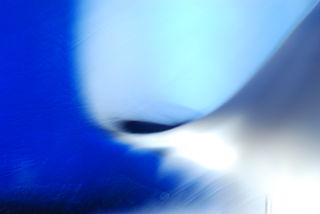
Abstract photography, sometimes called non-objective, experimental or conceptual photography, is a means of depicting a visual image that does not have an immediate association with the object world and that has been created through the use of photographic equipment, processes or materials. An abstract photograph may isolate a fragment of a natural scene to remove its inherent context from the viewer, it may be purposely staged to create a seemingly unreal appearance from real objects, or it may involve the use of color, light, shadow, texture, shape and/or form to convey a feeling, sensation or impression. The image may be produced using traditional photographic equipment like a camera, darkroom or computer, or it may be created without using a camera by directly manipulating film, paper or other photographic media, including digital presentations.

Thomas Dodd is a digital artist and photographer based in Atlanta, Georgia. His art images result from digitally transforming his photographs to make them look painterly, subtly blurring the lines between photography and classical art. He often creates moving surreal images inspired by religious and mythological themes, using styles comparable to those of renowned modern painters like Gustav Klimt, John William Waterhouse and René Magritte. Dodd's art-work has been frequently cited and revised by many of his peers and specialized art websites. His work has been exhibited in many cities in the US and around the world, and made its way to inhabit important permanent public collections

A chemogram is an experimental art where a photographic image is partly or fully enlarged and processed onto photographic paper in the darkroom and afterwards selectively painted over in full light with chemicals used in photographic processing. Due to the production process chemograms can be considered works of abstract photography.
